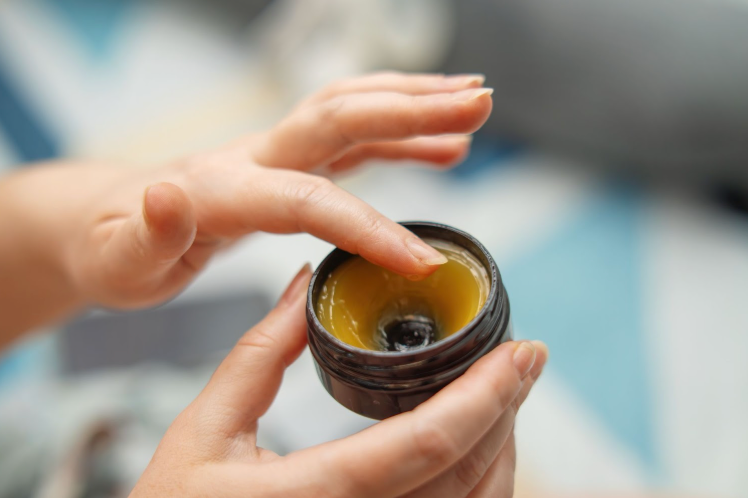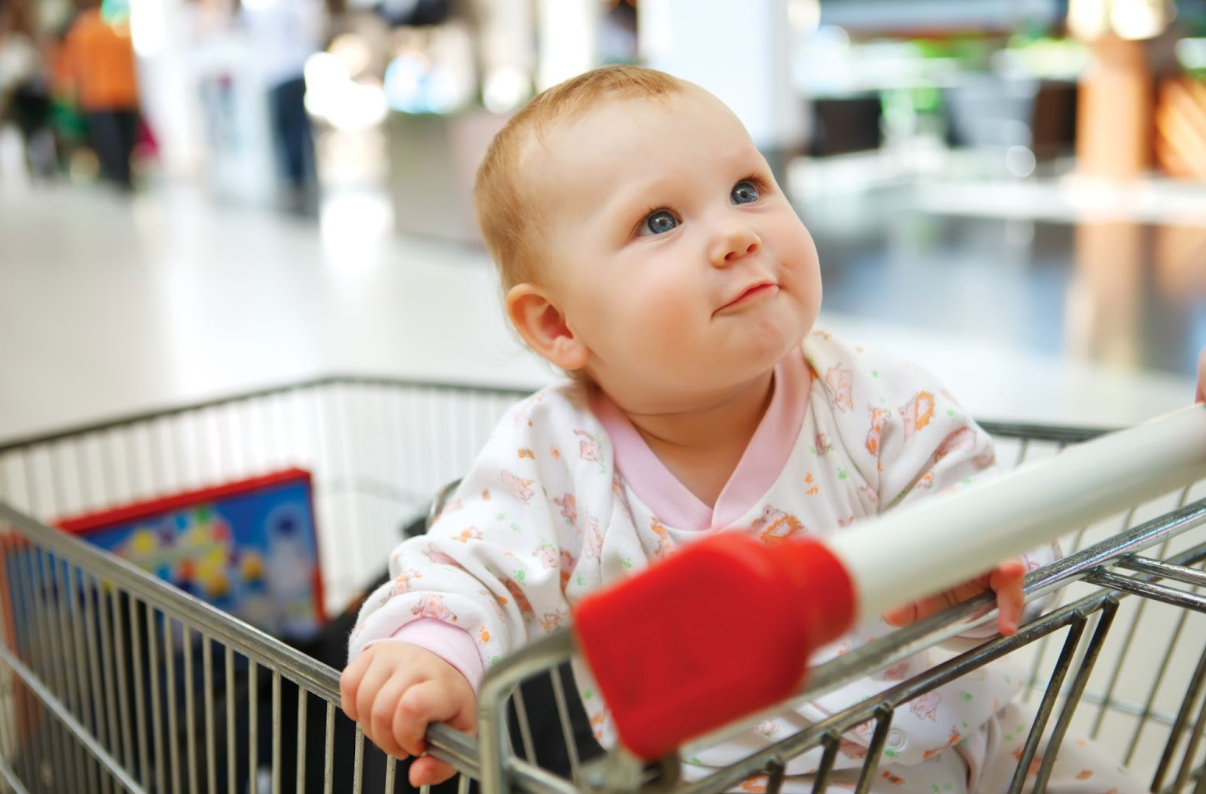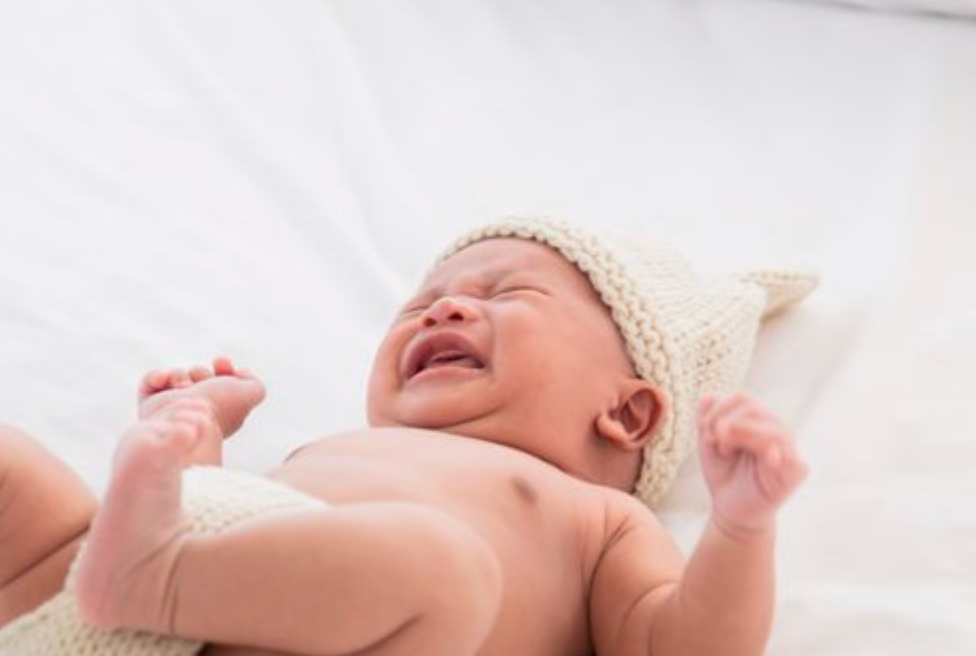Published June 18, 2024

First Year Feeding Schedule: How Much Should My Baby Eat?
As a new parent, few things are more stressful than figuring out your baby’s feeding schedule. Questions like “Is my baby eating enough?” or “Are they eating too much?” are common worries among first-time and veteran parents alike. Whether your little one is a newborn, 3 months old, 6 months old, or beyond, we've got you covered with tips on when and how to feed your baby during their first year.
What Are Recommended Baby Feeding Schedules by Age?
While the total daily volume of breastmilk or infant formula your little one needs stays roughly the same for the first year (~24-32oz per day), how often you feed your baby and how much they drink each feeding can change considerably as they grow. Let’s dive into baby feeding schedules by month and age, focusing on the stages that impact these schedules.
Meet the first and only USDA organic infant formula manufactured in the U.S.! Bobbie Organic Whole Milk Formula offers complete nutrition for baby's first year with our closest to breastmilk recipe.
Shop Organic Whole Milk Infant Formula

Disclaimer: These schedules are simply a framework to consider and are not prescriptive. If a baby is showing signs of hunger outside of dedicated “feeding times,” please feed the baby sooner. Questions about your child’s nutrition or feeding needs should always be discussed with your pediatrician.
Newborn Feeding Schedule
In a sense, the term “newborn feeding schedule” is a misnomer — newborns rarely conform to a feeding schedule, and that’s completely normal for their development! The American Academy of Pediatrics (AAP) recommends newborns feed on demand, versus on a set schedule. This simply means feeding your baby whenever they show hunger cues, even if little time has passed since they last ate. Feeding on demand, or responsive feeding, during your baby’s first few days and weeks is important for several reasons:
- Frequent lower-volume feedings accommodate a newborn’s small stomach size.
- Regular nursing sessions promote a strong milk supply if breastfeeding.
- Frequent feedings help to ensure the baby is gaining weight appropriately.
While the AAP doesn’t recommend feeding on a time-bound schedule during the first 12 weeks, many pediatricians recommend feeding at least every three hours during the day and night until the baby reaches their birth weight again. This typically translates to feeding your baby at least eight times a day, and likely more, throughout every 24 hours of your baby’s first week(s).
3-Month-Old Feeding Schedule
After the fourth trimester, you might be eager to establish a set feeding schedule, especially if you’re heading back to work and your baby starts daycare. Most little ones still need to eat every three hours during the day and might continue to wake for feeds at night. While every family's routine is different, here's a typical infant feeding schedule at this stage:
- 7:30 a.m. — Wake up, then breastmilk or formula
- 10:30 a.m. — Breastmilk or formula
- 1:30 p.m. — Breastmilk or formula
- 4:30 p.m. — Breastmilk or formula
- 7:30 p.m. — Breastmilk or formula, then bedtime
- 10:30 p.m. — Breastmilk or formula (often offered as a “dream feed”)
These times can be adjusted according to your baby's nap schedule, aiming to feed every three hours. To promote better nighttime sleep, your baby should consume most of their breastmilk or formula during the day. That's why the schedule above includes five feedings between wake-up and bedtime.
6-Month-Old Feeding Schedule
Half a year down and it’s time to start solids! The AAP recommends introducing solids between four and six months of age, as long as your baby is hitting developmental milestones — such as holding their head up or sitting correctly in a high chair. Whether you're trying finger foods or purees, remember that breast milk or infant formula must remain their main source of nutrition.
Solids are introduced to aid oral motor skills and offer texture exposure but should supplement, not replace, nursing or bottle feeding. You can continue your previous baby feeding schedule while adding a solid meal during adult mealtimes, like dinner:
- 7:30 a.m. — Breastmilk or formula
- 10:30 a.m. — Breastmilk or formula
- 1:30 p.m. — Breastmilk or formula
- 4:00 p.m. — Breastmilk or formula
- 5:30 p.m. — Solids
- 7:30 p.m. — Breastmilk or formula
- (10:30 p.m. — Possible breastmilk or formula dream feed)
Don't worry about giving your six-month-old three meals a day plus snacks and bottles. It's okay to start slowly, gradually increasing solid food while reducing bottles over the second half of their first year! You can offer more solids as your baby gets used to them.
9-Month-Old Feeding Schedule
As your baby hits nine months, they're likely more active and burning more calories. You might also notice a growth spurt around this time. With the first birthday approaching, many families begin to offer more solid foods and cut down on bottles, typically from five or six to three or four a day. Remember, breast milk or formula should still be the main source of nutrition, aiming for 24-32 ounces per day alongside table food at meals:
- 7:30 a.m. —Breastmilk or formula
- 11:30 a.m. —Solids (lunch)
- 1:30 p.m. — Breastmilk or formula
- 4:00 p.m. — Breastmilk or formula
- 5:30 p.m. — Solids (dinner)
- 7:30 p.m. — Breastmilk or formula
At this stage, your baby may not wake for night feeds anymore. It's also a good time to introduce a straw cup and offer water during meals, as they'll be transitioning from bottle to cup shortly after their first birthday.
1-Year-Old Feeding Schedule
Congratulations on your toddler's first birthday! Now it's time to shift from breast milk or formula as their main source of nutrition to solid foods. Breast milk, cow’s milk, or milk alternatives supplement regular meals and snacks. A good rule of thumb — if replacing a bottle with a snack or meal, aim for a similar calorie intake. For instance, if your baby used to have an eight-ounce, 150-calorie bottle, snacks like avocado with berries or cheese and crackers could provide a similar amount.
Many parents find the following baby feeding guide helpful, keeping milk in the routine before nap and bedtime:
- 7:30 a.m. — Breakfast
- 10:30 a.m. — Snack
- 12:00 p.m. — Lunch
- 1:30 p.m. — Milk (bottle or cup)
- 4:00 p.m. — Snack
- 5:30 p.m. — Dinner
- 7:30 p.m. — Milk (bottle or cup)
If you're concerned your baby won't eat enough “real food” to cut back on milk — don’t worry! In fact, toddlers often start eating more solids once their milk intake decreases. Aim for around 16 ounces of whole milk or a high-fat milk alternative per day for your 12-month-old as a good target.
Sign up to get the scoop on feeding, sleep, poop, and so much more. By singing up for email, you are to receive marketing emails from Bobbie and can manage your email preferences or unsubscribe at anytime

Your go-to resource for all things new baby.
How Often Should Babies Eat?
How often your little one should eat depends on several factors, like their birth size, feeding method (bottle or breast), type of milk (breast milk or formula) and age. It's also worth noting that formula-fed and breastfed babies can have distinct eating patterns during their first year. Let’s break it down!
Breastfed Babies
If you're exclusively breastfeeding, your baby may feed on demand throughout the first year, even overnight. Infants often nurse for reasons besides hunger, like comfort, which can increase nursing sessions. They should feed at least every three hours, but frequency can vary as they grow.
Formula Fed Babies
Exclusively formula-fed babies may eat less frequently but drink more milk per feeding compared to breastfed babies. This is normal! As your formula-fed baby grows, you might start consolidating their bottles. They should still have feeds every three hours initially, but can extend to four or five hours as they start eating more solid meals later on.
Combo Fed Babies
If you're combination feeding, how often your baby eats depends on whether they're nursing or bottle-feeding. Bottle-fed babies tend to consolidate feedings and take larger volumes regardless of whether it's breast milk or formula. If your baby primarily nurses but gets a formula bottle occasionally, they'll likely continue nursing more frequently, similar to exclusively breastfed babies.
Remember, as long as your baby is growing and gaining weight well, changes in how often they feed — whether nursing or bottle-feeding — or the number of bottles they have each day, typically aren't a big worry. Just keep an eye on your little one and adjust based on their cues and preferences.
How Can I Introduce a Feeding Schedule?
Starting a baby feeding schedule might seem intimidating, but here are four tips for an easy and successful transition:
- Pay attention to the natural rhythms of your baby’s day: Note when your baby tends to get hungry and plan around those times by jotting down feeding patterns a week or two beforehand.
- Establish a calming pre-feed routine: Create a soothing ritual before each feeding session, such as gentle rocking or singing, to help your baby relax and associate feeding time with comfort.
- Decide on a daily wake time: You’ve probably heard the adage “never wake a sleeping baby,” but it doesn’t exactly apply here! Establish a fixed time for the first feeding of the day, even if it means waking your baby, to ensure a smooth routine with feedings every three hours until bedtime.
- Prioritize daytime calories, not daytime sleep: If you’re hesitant to wake your baby from a nap when it overlaps with a scheduled feeding time — don’t be! Establishing feeding patterns during the day helps you avoid frequent late-night feedings, even if it means waking your baby from naps occasionally.
- Keep an eye on growth and development: Monitor your baby's growth milestones and developmental progress to make sure your feeding schedule meets their changing needs.
- Stay consistent: Adjusting to a new routine takes time for you and your little one. So, if the first few days of a new feeding routine are messy, that’s OK! Stay patient and persistent, and this consistency will eventually make the feeding schedule a predictable and enjoyable part of your day.
- Seek support and guidance as needed: Don't hesitate to reach out to your pediatrician or a lactation consultant for help if you’re running into challenges or have concerns about your baby's feeding schedule.
Feeding FAQs: Looking at Baby’s Nutrition and Development
Let's explore some common questions you might have about breastfeeding and formula feeding as you go along:
What are some signs of feeding-related discomfort or digestive issues?
If your baby seems fussy during or after meals, shows signs of excessive gas, or spits up quite a bit, they might be experiencing some digestive discomfort. Watch for a bloated stomach or changes in their stool, like constipation or diarrhea. These can all be signs of feeding issues, and if you notice them often, it might be good to have a chat with your pediatrician.
How can I tell if my baby gets enough milk or formula during each feeding session?
It's natural to wonder if your baby is getting enough to eat. Look for steady weight gain, plenty of wet diapers (about six per day), and a generally happy demeanor post-feeding. If your little one seems content and is growing, those are great signs! If you're ever unsure, your pediatrician can offer reassurance that your baby is on track.
Are there any specific breastfeeding techniques or positions that can help?
Finding a comfortable feeding position can make a big difference for you and your baby. The Mayo Clinic recommends positions like the “cross-cradle” or “football” hold to improve your little one’s latch when breastfeeding. Ensure your baby’s mouth covers more than just the nipple — getting a good portion of the areola is key. Feel free to experiment with different holds to see what works best for both of you.
What role does parental nutrition play in breastfeeding?
Studies suggest a link between a mother’s diet and their baby’s nutrition. This means eating a well-balanced diet rich in essential nutrients supports your health and your milk’s quality. Include plenty of proteins, whole grains, and healthy fats like omega-3s, and stay hydrated. It’s also a good idea to limit caffeine and processed foods. This way, you'll feel better — and so will your baby!
What resources or support networks are available for parents?
There’s a wealth of support available for you. Many hospitals offer lactation consulting and organizations like La Leche League run support groups. Online, you can find forums, blogs, and apps designed for new parents that provide tips and community support. And remember, your pediatrician is always a fantastic resource for advice and referrals if you need more specialized help.
Feeding During Baby’s 1st Year
Other than maybe changing diapers, you’ll spend more time on feeding than anything else during your baby’s first year. And given how quickly babies grow and develop, it's natural to have questions. With these sample schedules, you can navigate your infant's changing needs confidently as they grow, become mobile, start solids, and transition away from breast milk or formula.
Looking for a thoughtfully crafted formula that your baby is sure to love? Shop Bobbie Baby Formula today!
Bobbie infant formulas are clean, EU-style infant formulas that meets all FDA requirements. They are complete nutrition, milk-based powder, modeled after breast milk and is easy on tummies. They are all non-GMO and do not have corn syrup, palm oil, or maltodextrin. Shop Bobbie today!
Shop Bobbie Baby Formula

The content on this site is for informational purposes only and not intended to be a substitute for professional medical advice, diagnosis or treatment. Discuss any health or feeding concerns with your infant’s pediatrician. Never disregard professional medical advice or delay it based on the content on this page.






































